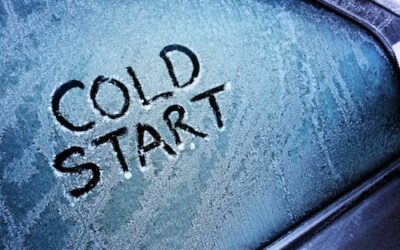This is one of the questions learner drivers might get asked on their theory test: “Why do MOTs include exhaust emission tests?”

The multiple choice options might be:
- To pay for expensive garage equipment.
- To make sure diesel and petrol cars have the same emissions.
- Because the government wants to know which fuel supplier is the most popular.
- To protect the environment against pollution.
The answer? It’s d. MOTs include a strict exhaust emission test as part of the international drive to address potentially harmful carbon emissions.
How Does the MOT Emission Test Work?
The DVSA introduced emission tests to the MOT in 2018. As part of an MOT, they now measure the amount of carbon monoxide and hydrocarbons contained in your car’s emissions. And if you drive a diesel car, they’ll also test for nitrogen oxide (NoX) levels.
Cars are getting cleaner and more efficient every year. If your car’s in good working order, your emissions should always be vaguely in line with whatever the manufacturer says they should be. So if you’re driving a relatively new car, you’re very unlikely to fail your MOT on emission levels.
But if you’re driving an older car – particularly an older diesel car – then you may fail an MOT based on high emission levels.
But don’t worry. All’s not lost. There are a few things you can do to reduce emissions in diesel cars. As a result of a failed MOT, you may have to install new equipment to bring your car emissions down to more acceptable levels. Alternatively, if you try one of these solutions sooner rather than later, then you may be able to avoid failing your MOT due to emissions.
4 Ways to Reduce Emissions in Diesel Cars
There are a number of ways you can help to reduce your emissions in a diesel car, including the following.
Switch to Premium Fuel to Reduce Emissions
It’s more expensive, but premium diesel can contain chemicals specifically designed to reduce the amount of soot and dirt in your car’s engine and emissions. If you always use premium fuel, your car’s engine will get cleaner in the long-term, which can result in lower emissions.
Check Your Tyre Pressure to Save Fuel
When did you last check your tyre pressure? If your tyre pressure’s too low, you could be burning through more fuel than necessary. This, of course, will result in higher emissions. Head here to read our complete guide to tyre pressure.
Selective Catalytic Reduction (SCR)
The MOT emissions test will look for NoX levels in your emissions. Install an SCR in your car, and it will automatically convert this NoX into nitrogen and water vapour. This is an option to consider if you’re worried about failing your MOT. Just be aware that an SCR system is expensive, and only really designed for larger vehicles, such as buses and lorries.
Diesel Particulate Filter (DPF)
Diesel cars used to produce thick black smoke. Since 2011, almost all diesel cars feature a DPF as standard. It reduces emissions through catching soot in the exhaust before it has a chance to leave the car. If your car was manufactured after 2011, then it should already have a DPF fitted. But if you’re driving an older car, consider getting one installed before your MOT.
Please note: It’s illegal to remove your DPF from a car. The penalties for doing so include a fine of up to £1,000. You could also invalidate your car insurance.



